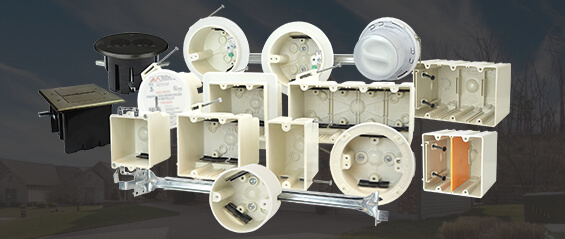Electrical Enclosure Cable Management TipsPosted by Allied Moulded Products on December 8th, 2020 Industrial electrical control enclosures typically house multiple circuit types including power, control, communications, and instrumentation. Effective wire management is needed to improve the performance of systems and to make troubleshooting easier. Beyond these important benefits, good cable management also improves safety. When electrical enclosure wires are tangled and unorganized, there is a greater chance of a short circuit that can result in costly downtime or even a fire. Often, the source of low power circuit interference or crosstalk is found to be weak cable support or poor wire connections. When these problems strike during data transfer, the loss of important information is often the result. To prevent erratic control panel performance and avoid cable spaghetti, here are some cable management tips for a neater and higher performing electrical enclosure. Electrical Enclosure Cable Management Wrap or bundle wires Even small control panels that may not require cable duct will still benefit from wires that are supported and protected. Cable ties and cable wraps are good options, but cable sleeves allow the bundling of multiple wires without losing the flexibility that would allow for bends or easy movement when required. If the possibility of a cable moving across an abrasive surface exists, then consider a braided cable sleeve that is lightweight yet abrasion resistant and offers thermal protection.
Label all cables While most panels will feature wire labeling, once they are bundled or if a multi-wire cable is used, tracing wire numbers can become difficult. When it's time to troubleshoot a control panel, all cables should be labeled and referenced to a cable diagram. This is especially true for all cables that are run to a power source. Label cables at each end to make it easier to track down and identify problems. Use cable clamp supports Loose electrical connections are often traced to a heavy cable assembly that is pulling wires away from component connects. Always support cables inside the electrical box to eliminate any stress on connections and prevent control or power failure. Cable clamps are the easiest way to support cables while also clearly defining their route for electricians to trace when troubleshooting. You can use fewer cable ties or bundling when you use cable clamps to secure your wire bundles. Install cable/wire duct For larger electrical enclosures, cable and wiring ducts are the best solutions for wire management. You'll find a wide range of narrow or wide, slotted or solid wall wire duct products that make it easy to access wire. Wire duct is also used to separate wires and cables by signal classification, such as:
Visit Allied Moulded Products Inc. for a wide selection of polycarbonate and fiberglass electrical enclosures and enclosure accessories including wall-mounted or free-standing enclosures. Non-metallic enclosures are a superior choice for environments that are corrosive or when chemical splash is possible. When compared to aluminum or galvanized steel enclosures, non-metallic enclosures are the cost-effective choice, averaging 40% less than metallics. Like it? Share it!More by this author |



